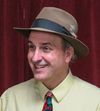Telegraph Hill Castle: Layman's Folly
In the early 1880s, a transit car line ran to the top of San Francisco's Telegraph Hill where passengers could visit a strange observatory/concert hall/castle.

My whole life I was told that Coit Tower on the top of Telegraph Hill was meant to resemble a fire hose nozzle because the woman who paid for it, Lillie Hitchcock Coit (a real pistol in the pantheon of all-time San Francisco characters), was a fire engine company fan. This story is likely not true.
What is true is that after a Gold Rush-era telegraph station (a story for another time) and before Lillie’s 1930s not-fire-nozzle tower, Telegraph Hill’s summit landmark was a crazy castle serving as bar, restaurant, dance hall, observatory, and knights’ sparring ground. Don’t believe me? There’s photos!
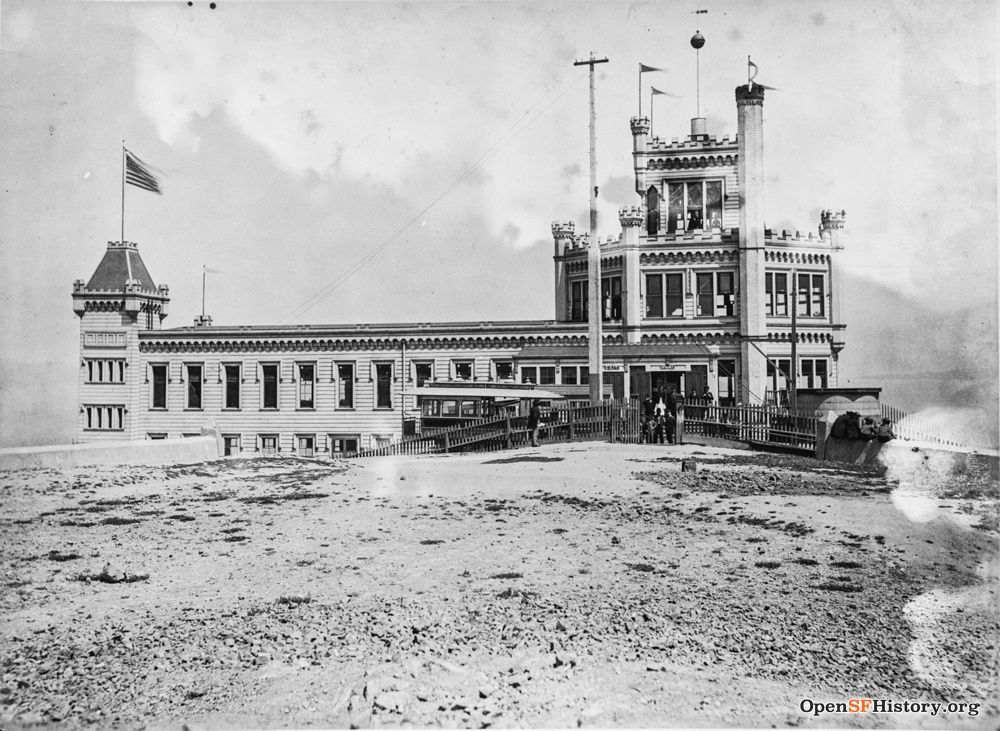
The strange castle structure appears in many nineteenth-century San Francisco vistas and had many titles and nicknames: Telegraph Hill Observatory, Pioneer Park Observatory, the German Castle, Layman’s Castle, and perhaps most accurately, “Layman’s Folly.”
Frederick O. Layman wanted to create a cable car line up Telegraph Hill and open up the steep hillside to development. The Clay, Sutter, and California Street cable car lines had successfully made Nob Hill the home of the city’s fashionable elite over the 1870s. (Remember, kids, the way to make your fortune in San Francisco is always real estate.)
Layman applied to the city for a cable road franchise on Kearny Street running from Pacific Street straight up the south slope of Telegraph Hill. Passengers would then, Layman proposed, be able to take an elevator of his construction down 110 feet from Chestnut Street to connect to waiting cars that could deliver them to the seawall at North Point Street. The Board of Supervisors complied and gave Layman his franchise in May 1882.
Franchise in hand, Layman still needed to attract investors to build his line. To do so, he needed a business reason for people paying to ride to the top of a scrubby dirt hill. The existing occupants of Telegraph Hill in the early 1880s lived in scattered humble cottages and weren’t a promising base of customers. But commuting nabobs wouldn’t commit to building any handsome homes on the hill until the cable cars actually began running. So, to attract investors to his transit company and get some income on the books, Layman invented a hilltop attraction to jump-start fares and build buzz for his cable company.
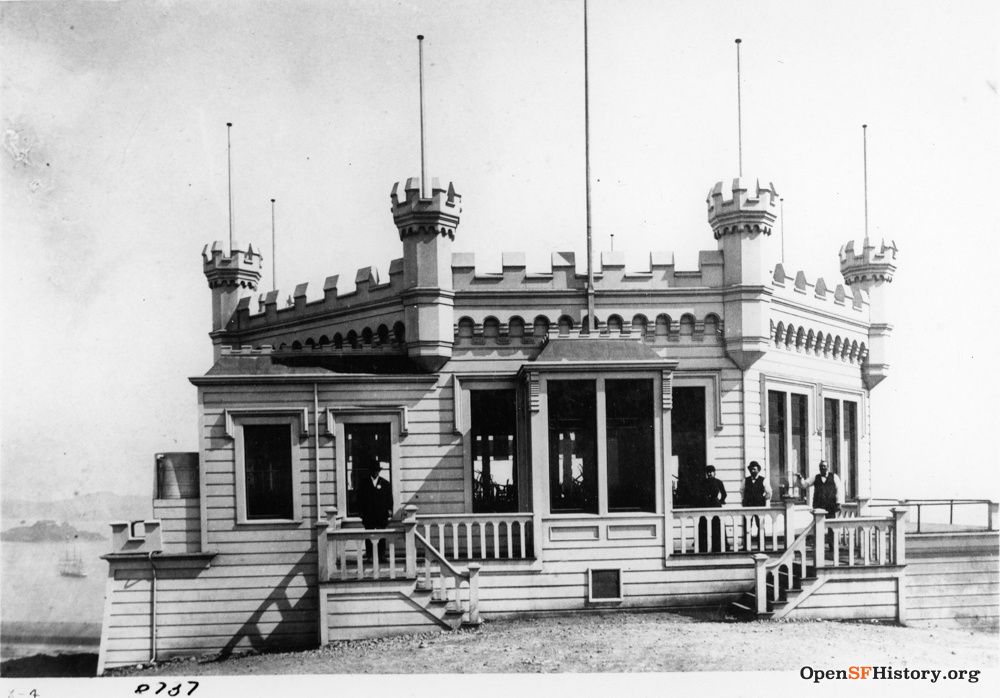
Layman erected a mini-castle of hospitality, a two-story octagonal structure painted white, with a crenelated roof-line and tiny towers. The "Telegraph Hill Observatory, Restaurant, and Concert Hall" opened for business on July 4, 1882. The first visitors had to hike their way up Telegraph Hill for beer, band music, and views of the bay, promised that Layman’s cable cars were on the way.
But Kearny Street north of Broadway—steep, narrow, and at the time, twisty in parts—proved too challenging for Layman’s cable road engineers. Investors began to bail. Layman quickly changed course, literally, and applied to the city for an alternative franchise up the west side of the hill on Greenwich Street. The new plan was to run from Leavenworth Street on Russian Hill all the way over the summit, past the new castellated beer garden, and down the steep east side of Telegraph Hill to the Embarcadero. (That last part would have been challenging.)
Connecting Telegraph Hill with downtown was an uncertain business model, but hoping for a profitable ridership base between Russian Hill and Telegraph Hill was desperation. The city went ahead and gave approval for the franchise in November 1882, but supervisors openly said they thought the line would never be built.
Over 1883, Layman raised enough money to begin construction on part of his Greenwich Street line. In preparation for the opening, Layman enlarged the castle observatory into a rambling four-story folly with new verandas, false turrets, and an additional western tower. Acts such as the Hungarian Gypsy Band regularly entertained the handful of drinkers who took a weekend hike up the hill.
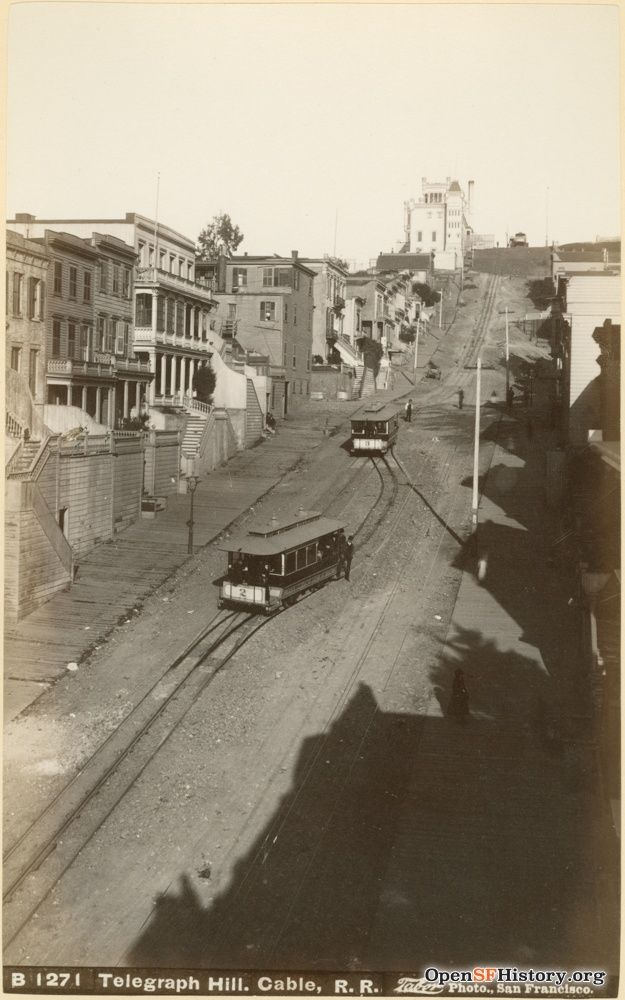
On June 29, 1884, the “Telegraph Hill Railroad” was officially dedicated with a big party at the observatory. Despite the high hopes and toasts, the car line barely got going. Instead of costly cable car infrastructure, the company went with a simpler funicular line in which cars were counterbalanced—connected by cable, the weight of the downhill car helped yank up the ascending car. Only the section between Powell Street and the summit was ever constructed, and without a direct link to downtown—one had to transfer to a different company’s line to do that—it didn’t have the patronage to pay off. Service ended in less than two years.
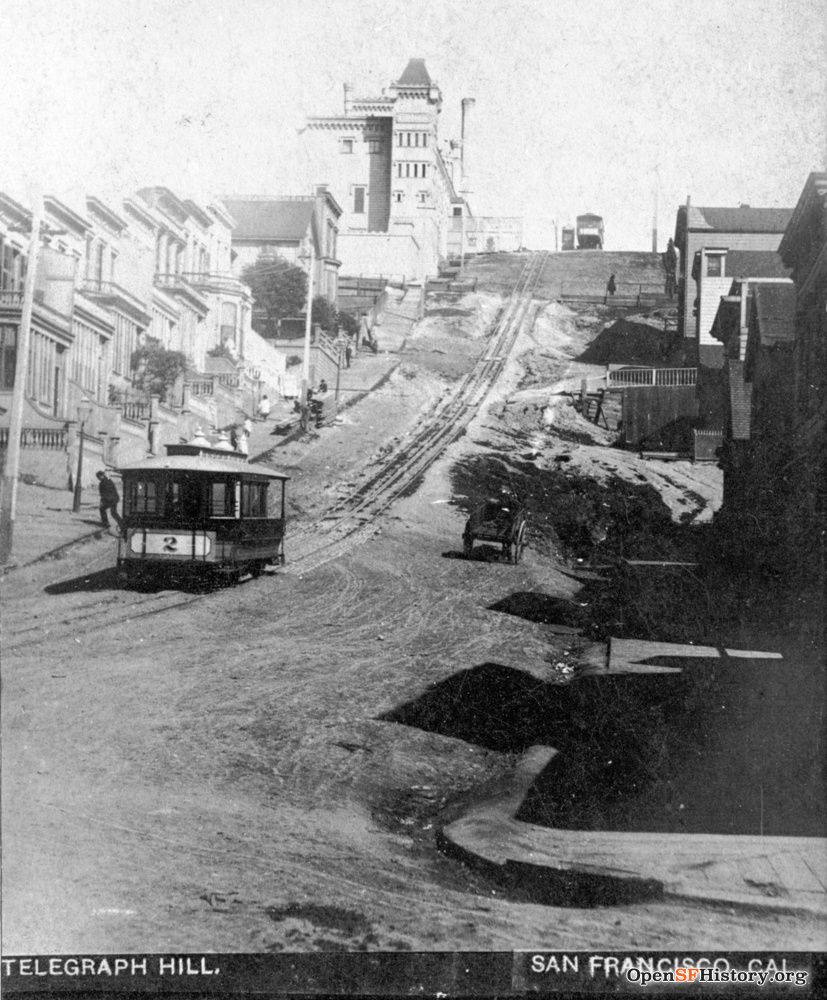
The number of visitors willing to climb the hill to “Layman’s Folly” dwindled. A series of lessees tried different stunts and spectacles to draw up customers once the novelty of the view wore off. These included, bizarrely, weekend broadsword duels by men in suits of armor.
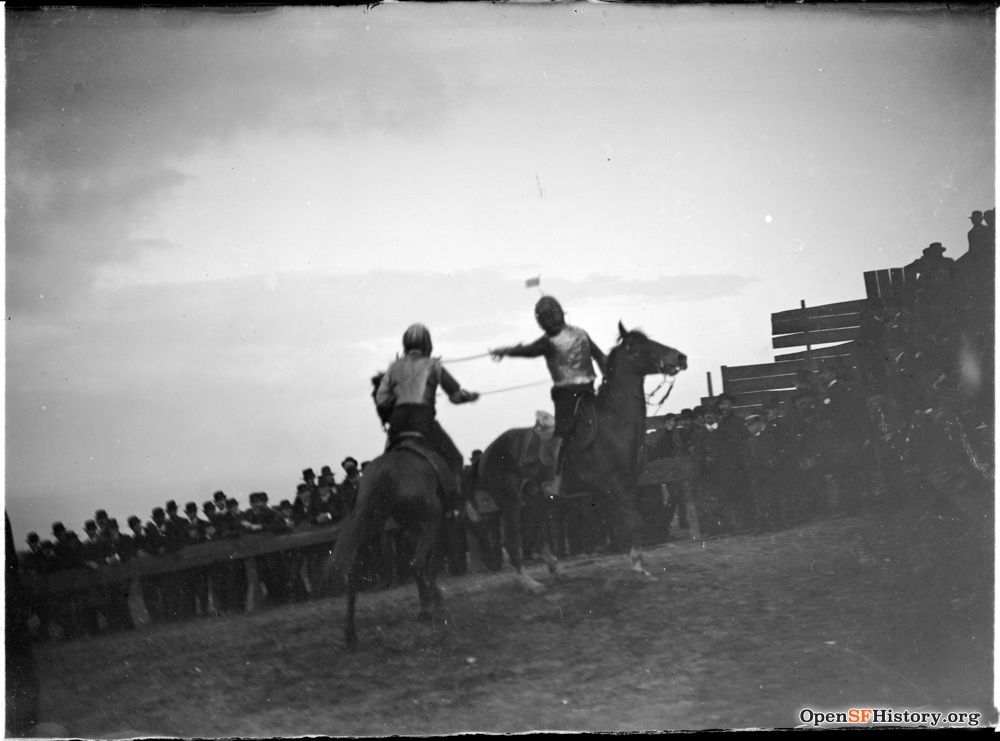
The castle became more ramshackle and by the 1890s its reputation dropped to the level of “hoodlum resort.” Occasional proposals for its reinvention and restoration were proposed up to the day a fire gutted it on July 25, 1903. Historian David F. Myrick wrote “many Telegraph Hill stoves that summer and autumn were fired with the remains of Layman’s Folly.” The summit of Telegraph Hill would stay mostly bare until the construction of Coit Tower in the early 1930s.
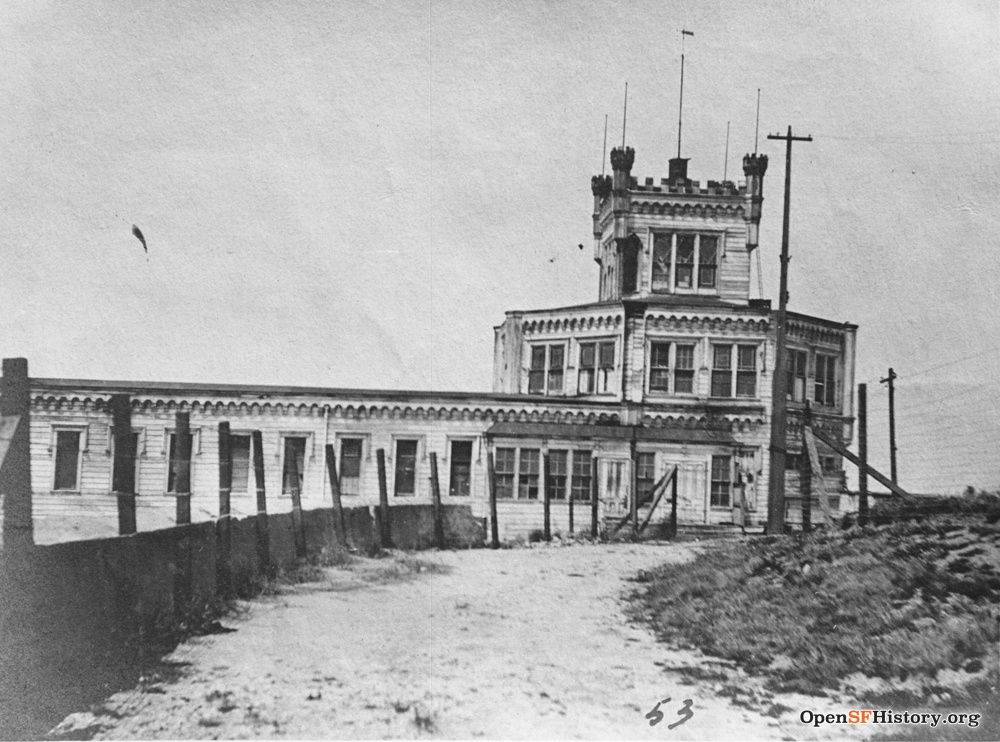
Read more about Layman’s Folly, the Greenwich funicular, and Telegraph Hill history in David F. Myrick’s excellent book, San Francisco’s Telegraph Hill, available to purchase from the Telegraph Hill Dwellers.

